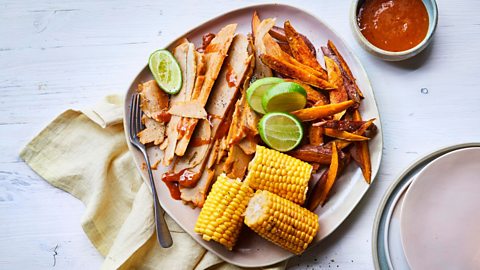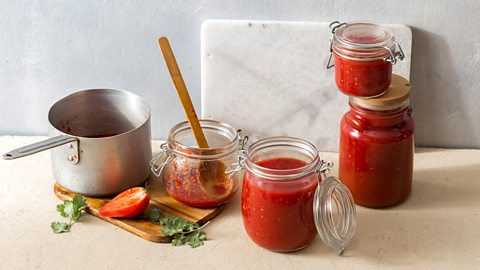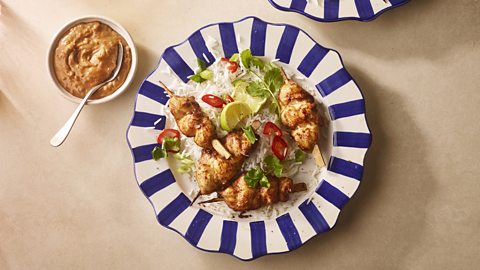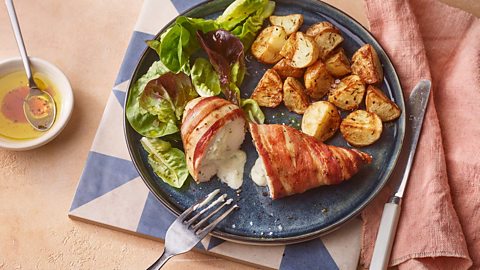The TikTok vegan chicken hack that costs 50p
TikTok cooks have been raving about a two-ingredient ‘vegan chicken’ that costs about 50p to make. The hashtag #veganchicken has racked up over 26 million views on the social media platform and the hype isn’t diminishing. It sounds pretty epic on paper, but is it all it’s cracked up to be?
What is vegan chicken?
TikTok may be calling this ‘vegan chicken’, but seitan is its official name and it has being around for a long time (and we mean centuries). It’s also sometimes referred to as wheat meat. Now it’s popping up everywhere online as fried chick’n, nuggets, fillets and more.
You can make seitan using a product called vital wheat gluten, which is flour with the starch removed, leaving behind the gluten. But you can also use plain flour, costing around 50p a bag, in the ‘WTF’ method. It’s not what you think. This acronym stands for ‘Wash The Flour’, as noted by the Seitan Society, and is said to be the original method used by the Chinese monks who discovered how to make it. You literally soak and then wash a ball of dough in the sink. This is how people are making it on social media. So how exactly do you do it?
How to make vegan chicken
Seitan is incredibly easy to make. You just knead together flour and water to develop the gluten and make a springy dough. It’s then soaked in water for around 2 hours before being rinsed under the tap for 5 minutes or so, until the dough resembles a stringy, stretchy mass that feels slightly squeaky between your fingers. The more starch you wash out, the chewier it will be when it’s cooked. While it rests for another hour, you can decide how to season it.
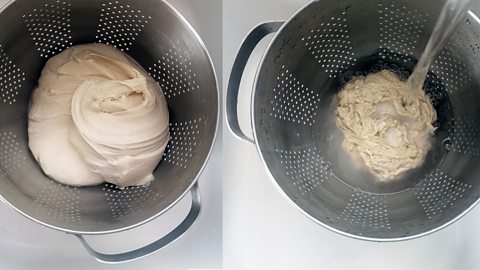
This is where you can spice things up. Pretty much anything goes in terms of seasoning, but you want to take into account what you’re using your seitan for. You might want to keep it simple with salt, pepper and garlic granules if you’re adding it to a rich sauce. Or you can go big and bold with chillies, smoked paprika or a spice mix such as piri piri or Chinese 5-spice to pack a punch for fried ‘chick’n’.
The dish you’re making will also define how you cook the seitan. A popular method is to tie the dough into a knot before simmering it in stock. This allows you to shred the ball, a bit like you do with pork shoulder – it works well for pulled ‘chick’n’ sliders and in this piri piri seitan. Or you can cook simmered (and cooled) seitan on a barbecue for char-grilled ‘chick’n’ or skewers – either thickly slice or cube it first or cook it whole. Wrapping the seitain in clingfilm and kitchen foil before simmering will result in a much denser product that’s better suited for a mock-sausage.
Crispy fried seitan commonly appears on TikTok as nuggets, strips or burgers. This calls for a two-step cooking process, as the seitan chunks first need to be simmered and cooled, then fried in a breadcrumb coating or batter, just like chicken nuggets. They can be eaten with ketchup or BBQ sauce, added to sandwiches, or used in a vegan katsu curry in place of tofu.
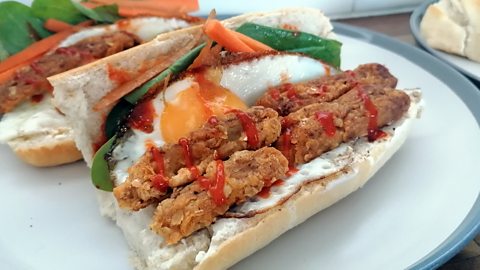
Taste and texture
Seitan has one of the meatiest textures of all the ‘mock meats’. It’s dense, slightly chewy and looks fairly convincing as a meat. If you’re simmering it in stock, leaving it to rest in the fridge overnight gives it a firmer texture, but it’s pretty hard to resist eating it straight away! Without seasoning it’s pretty bland, but this can be an asset as you can add almost any flavour or sauce, from hoisin or piri piri to gravy.
Is it healthy?
Seitan is low in carbohydrates and fat, and high in protein. However, it is “an incomplete protein”, says dietitian Anjanee Kohli, as it “does not contain enough of the amino acid lysine to meet your body’s needs”. But you can add other foods rich in this amino acid, such as beans, lentils, quinoa and tempeh. It also contains minerals including iron and magnesium, but it’s low in fibre, so you need to ensure you’re eating plenty of fibre sources, as many of us don’t eat enough of this vital nutrient.
